Second Skin, Third Eye 次生皮肤,逾目之眼
Solo Exhibition at Organhaus (Chongqing, China) curated by Ni Kun
A memory resurfaced in my stay at Organhaus in Beibei, for, as I stepped onto mother soil again, she returned me to my younger self. Second Skin, Third Eye, began in 2005 Hainan, Haikou. Outcasted by the children’s neighbourhood bicycle gang, I sat in the sandpit within the residential apartments staring into a large wall that divided the buildings from the sea. I heard the crashing wave and looked up into the setting umber sky and unknowingly stuck my hand into an anthill. I felt a stinging sensation numb my index finger. I was again reminded of the bind of a complex system that relies on a perpetual self-mutilation.
***
Second Skin, Third Eye explores the dichotomies of the working class; in their dreaming, identity construction and visibility. The boundaries of individuality is pursued against the backdrop of the Technocene riddled with Capitalist ventures, through elaboration of the enmeshment between the digital and real on platforms and gamified socialisation. A multidimensional playground is created to understand how the status quo is modulated.
The working class’s relationship and desire for upward mobility forms the core of the works, a required balance of external compliance and internal defiance that maintains the dream-state. The aspiration of wealth invades personal values through economic theories, undermining religious and family values, such that the parental injunction to ‘stay out of trouble’ translates to obeying as a mode of survival. Workers by default cannot defy in order to obtain security, rather being unique through aesthetic non-conformity is a bourgeois/Professional Managerial Class (PMC) fantasy.
Dreams are sold to invisbilise the labourer, maintaining a separation of the hand from the brain; such that stories of rags to riches, of life coach, of self-help forgo the foundation of wealth and exploitative tendencies such thinking possess. This false hope is increasingly important at a time when the myth of upward mobility is revealed more and more each day to be as hollow musings. More and more must be done to sustain the fantasy of equal opportunity under the neoliberal order. There is a constant tension between the invisible and visible, so that flesh is unavoidably a political site of contestation.
At the core of this exhibition sits Poison Fruit.
Poison Fruit is a single channel multimedia magic realism short film situated against the backdrop of Beibei Chongqing, starting within a desolate old glass factory. The tale begins with a young girl haphazardly practising her dance routine. Aspiring to be a pop star, one day a brick device falls from the sky. This instigates her adventure with Mr Mouse into the virtual.
This film explores the impact of dreams within the working class creator economy and the embedded hyper-visibility as a means to commodify, driven by value-exchange; where any object, person, concept, land can extract value. Within the unadulterated internet time of content consumption and information overload, the contemporary psyche is shaped, dreams influenced. Thus, the sequences reflects the erratic movement between web pages and physical contact.
In a referential world of creation (of remixes, parodies, -cores), the film rallies together fantasies and doom scrolls to amalgamate into an individual’s For You Page (FYP). A dreamscape tethering into a nightmarish territory crawling under the surface. References double as allegorical folktales. Some which may be spotted include, Adam and Eve, Mickey Mouse, Alice from Detroit: Become Human, Mortal Kombat, Bunny Rogers, Super Mario World and Teletubbies. Imprisoned in an echo chamber lost into duplicated identities, capitalistic greed is a thief of innocence. Quasi-religious language is employed to underscore the extent to which this experience plays on the now secularised desires for relief from the ‘productivity’ of contemporary capitalism. Producing individualism in a culture of narcissism described by the likes of philosopher J. David Bellman and historian Christopher Lasch.
In the lens of the ‘Young Girl’ she represents the spectacle as an ideological creature. An idea heavily explored by Tiqqun in Preliminary Materials For a Theory of the Young Girl, stating “the Young-Girl possesses her reality outside of herself, in the Spectacle, in all of the doctored representations of the ideal that it traffics, in the fleeting conventions it decrees, in the mores through which it commands mimesis. She is simply the insubstantial concretion of all these abstractions, which precede and follow her.“ Thereby the Young Girl and her skin is but a projection surface which malleability is forever determined by a social value. This analysis is furthered within Anne Anlin Cheng’s Second Skin: Josephine Baker and the Modern Surface, that intersects this relationship of visibility with race and architecture. By the end of the film, this projection extends to fictional characters, whom the Young Girl can transform and morph into as; political symbols, humorous memes or an object of personal desires.
The body act as the mediating vehicle between real and virtual, as liminal, where dreams kiss the skin, and fantasies come to swallow the bones. A dance between technological consciousness and real world affects that confront a imbrication of interiority and exteriority, essence and covering, the organic and the inorganic.
Through installation of mixed media works, video and projection mapping, this exhibition uses dreams of upward mobility, to understand the implications of surviving, obeying, resisting. Through incorporation of the internet vernacular, meme humour, digital nostalgia and magical realism the exhibition surgically constructs a layer of second skin that beckons to be seen.
Exhibition Library:
A Culture of Narcissism by Christopher Lasch
Preliminary Materials For a Theory of the Young Girl by Tiqqun
Second Skin: Josephine Baker and the Modern Surface by Anne Anlin Cheng
Powers of Horror by Julia Kristeva
The Laws of Lorecore by Shumon Basar
The Daddy Dialectic by Jody Rosenberg
BEYOND BASED AND CRINGE by Nate Sloan
Exiting the Vampire Castle by Mark Fisher



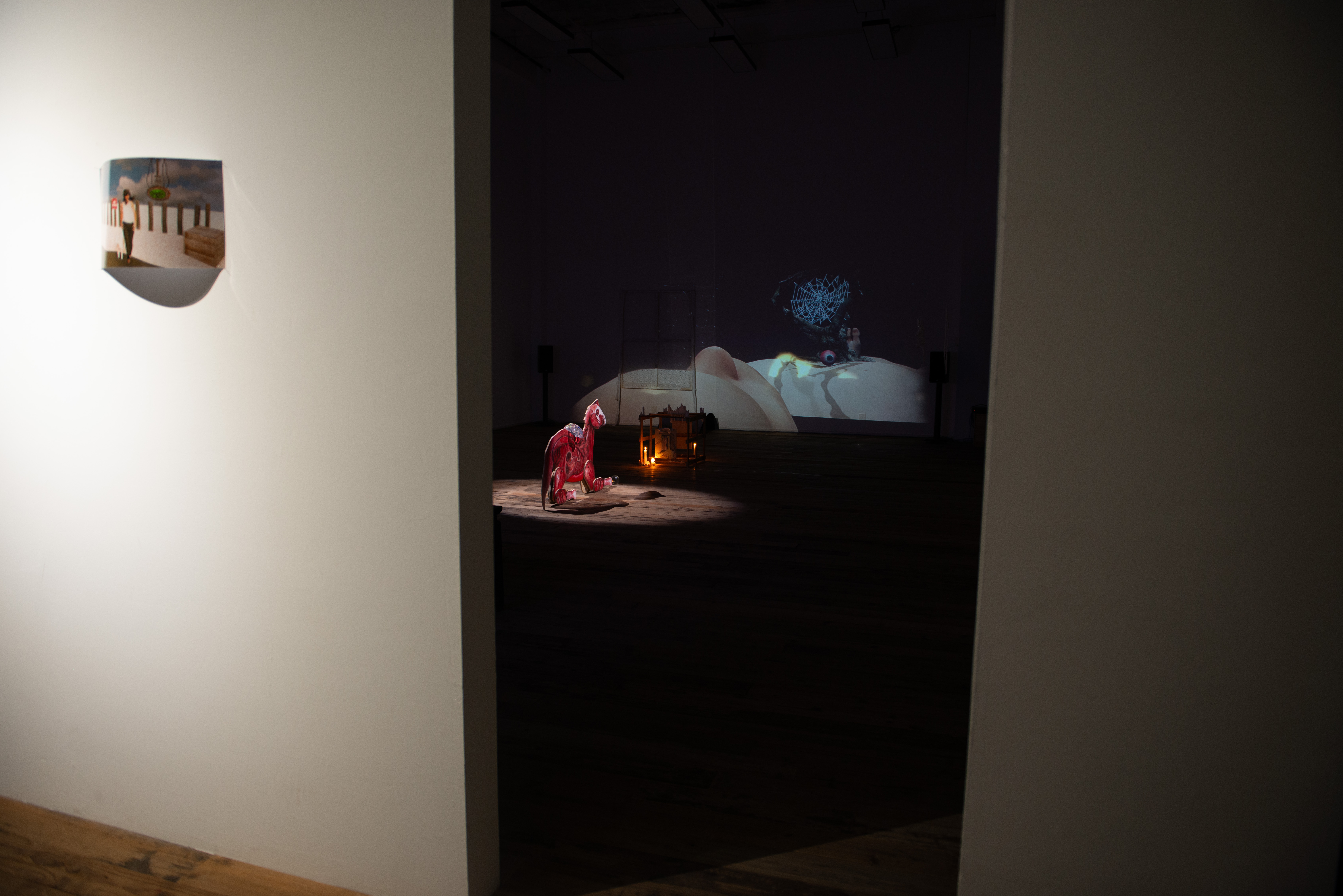






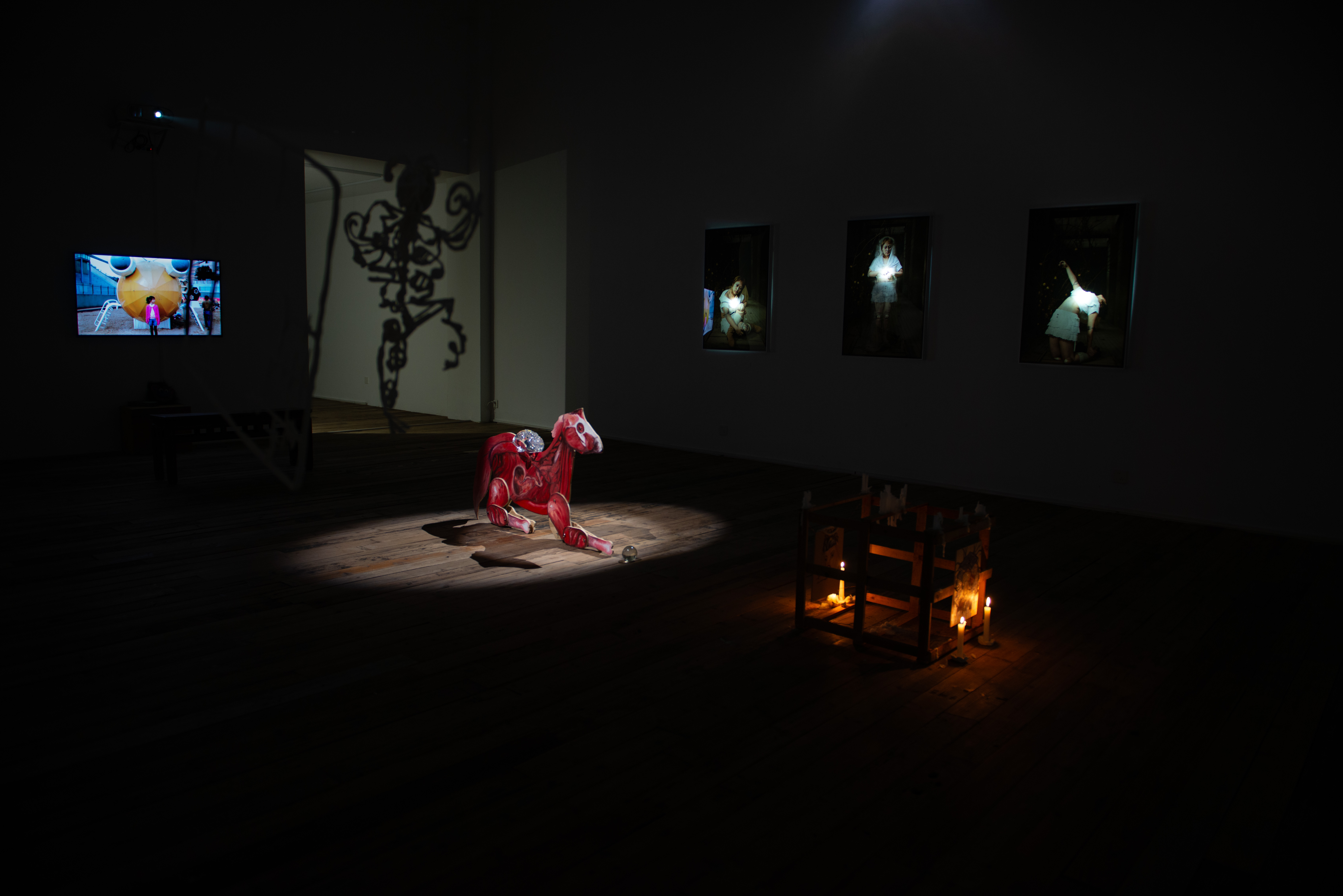


The exhibition space is viewed as a rumbling belly, an aching heart, an absorbent mind, an open mouth, a pair of eyes and a growing brain. An adult book, pages sewn as patches onto a child’s body.
01. Poison Fruit, 2024
3180 x 2160 px, Multimedia Film
6:38 minutes
*Additional Notes from statement*
In China, Winnie the Pooh is censored and its usage banned as it became codified as a representation for Xi Jinping due to their striking resemblance. However, the selection of Winnie the Pooh isn’t a politically charged one, but rather used due to the importance in its shifting meaning. Winnie the Pooh’s license expired on the 1st of January 2022 then shortly in 2023, Winnie-the-Pooh: Blood and Honey is released, a slasher film featuring the loveable bear. In relying on its created brand and mass appeal, it’s now enslaved to a labour for the rest of his life to exchange his identity for value or contrastingly shadowbanned into obscurity.


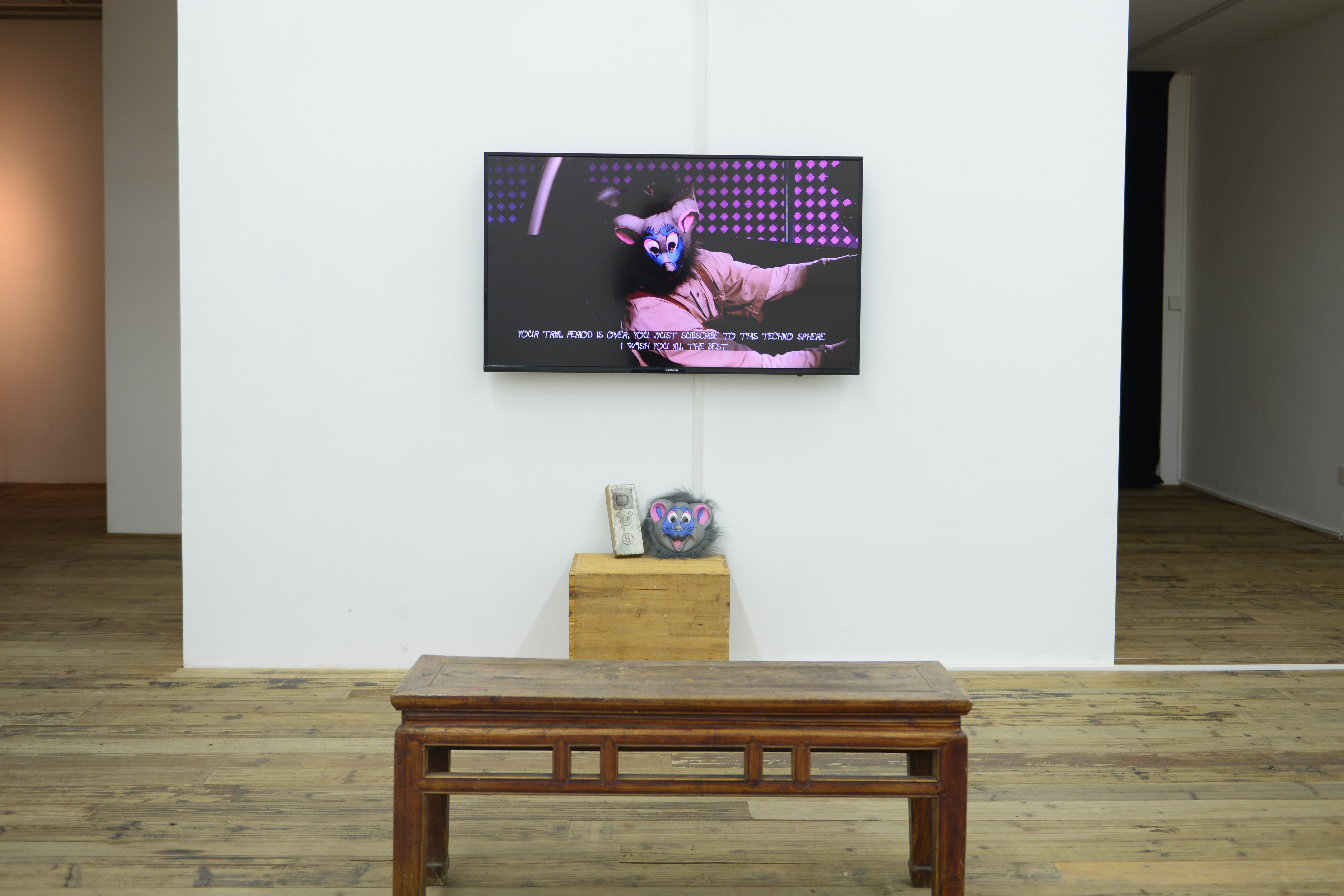

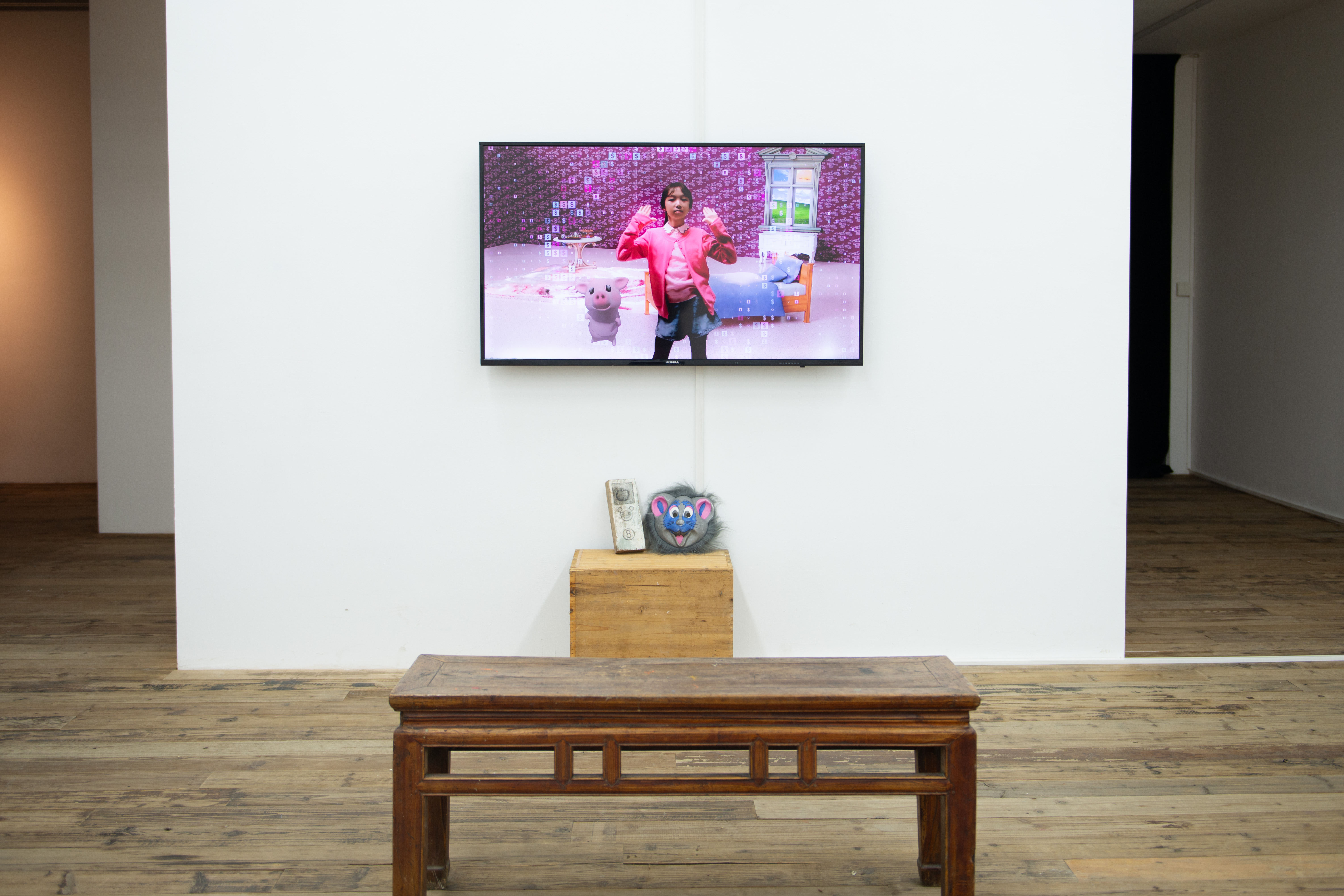






02. Doll Construction Project 1, 2024
110 x 4.2 x 73 cm, photographs printed, metal frames, LED light
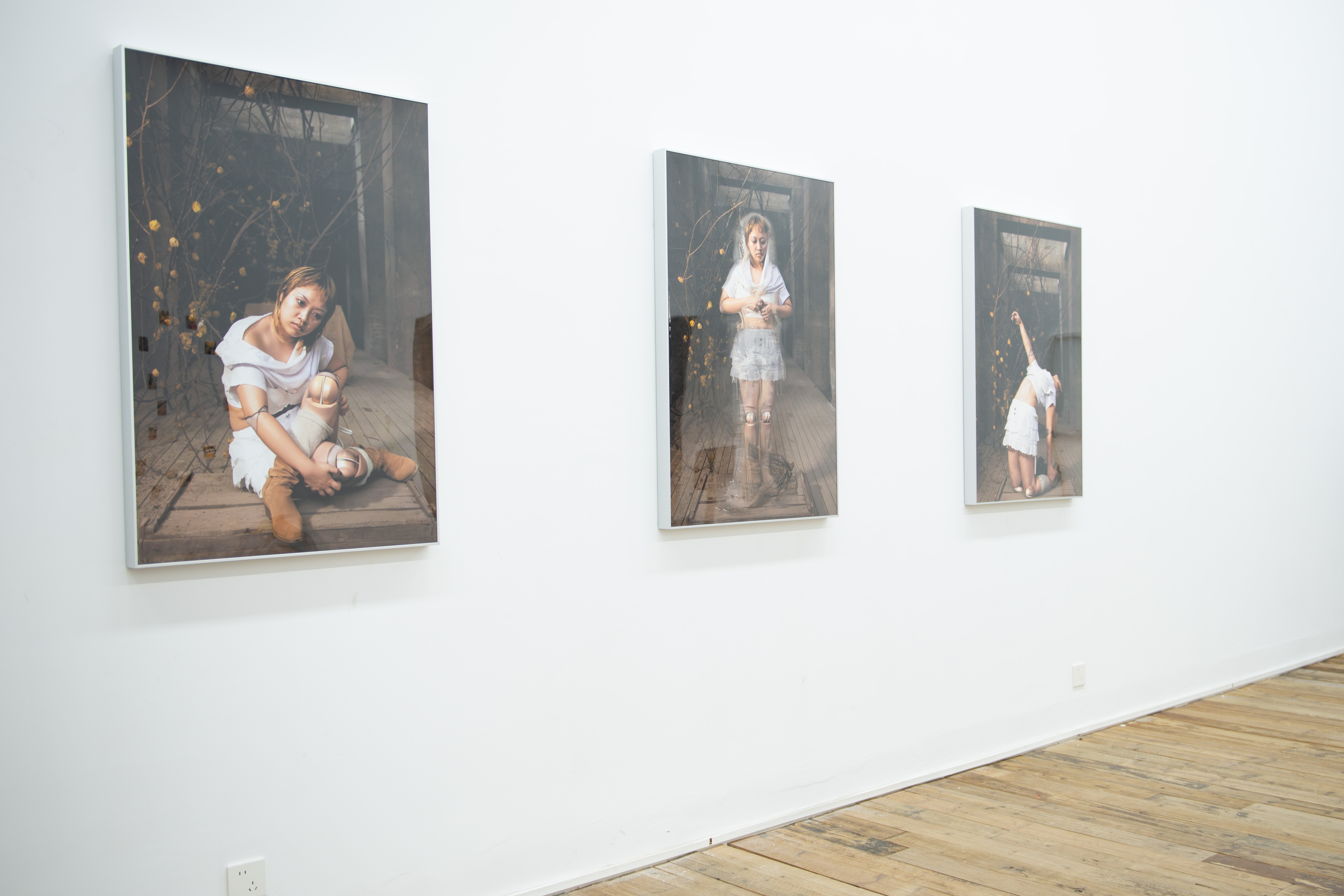



03. Fear of God: Hooked on Selling Jesus as a Gundam, 2024
50 x 50 cm, Modelling Clay, resin, varnish, glossy photographic paper, circular mirror
Fear of God. Brand or proverb?








04. Body Autonomy, 2024
51 x 7 x 30 cm, Wood, oil paint, steel screws, resin, glass
Body Autonomy interrogates the social, political and spatial subtexts that influence individual and collective psyches. The work regards the human condition as a liminal state, one in which there is constant mediation between the external and the internal, conveyed through surrealist fables and construction that emphasise the precarious nature of balance and static notions.





05. Export Import, 2024
60 x 60 x 60 cm, Wood, oil paints, copper wire, tin solder, candles, air dry clay








06. Army of Dreamers, 2024
230 x 500 cm, Projection mapping, wood, acrylic mirror, bandage, lace fabric
8:51 minutes
This installation is eponymous to Kate Bush’s track, Army of Dreamers. The song is slowed, reverbed and echoes through the installation. Army of Dreamers sings of the aftermath of war from the perspective of a mother grieving her dead son. Grieving what he could have been yet could have never become.
A ‘window’ of a canvas skeleton is stretched with a lace fabric with bandage curtains on both sides. An acrylic mirror is bent, towards the projection, acting as a gateway for the audience to become part of the projection. The projection is not aimed to be a distant memory and stand-alone film, the audience is propelled to be a part of its existence, trails of the real world creep into the projected illusion. An attempt to bring the audience back into the work.




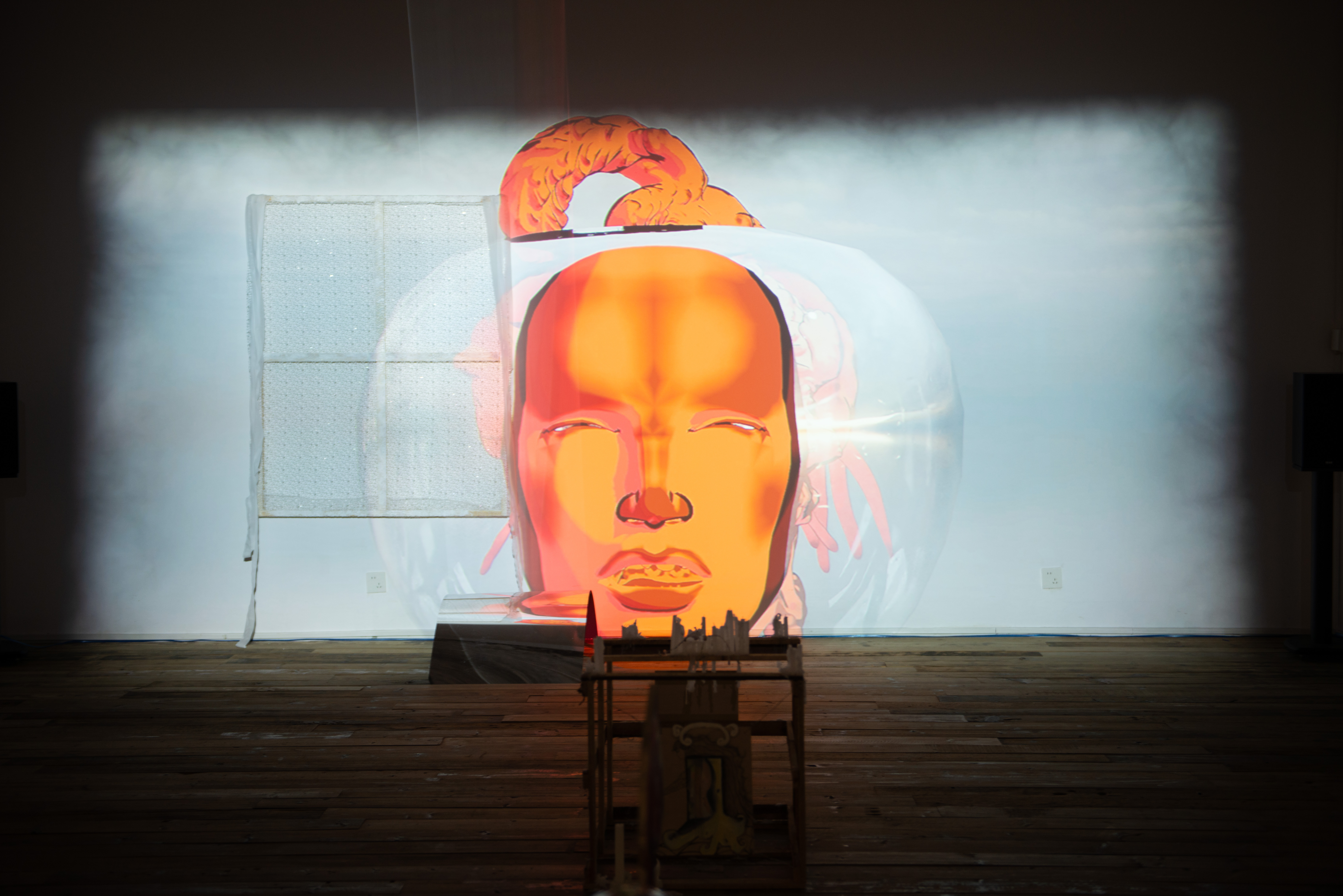
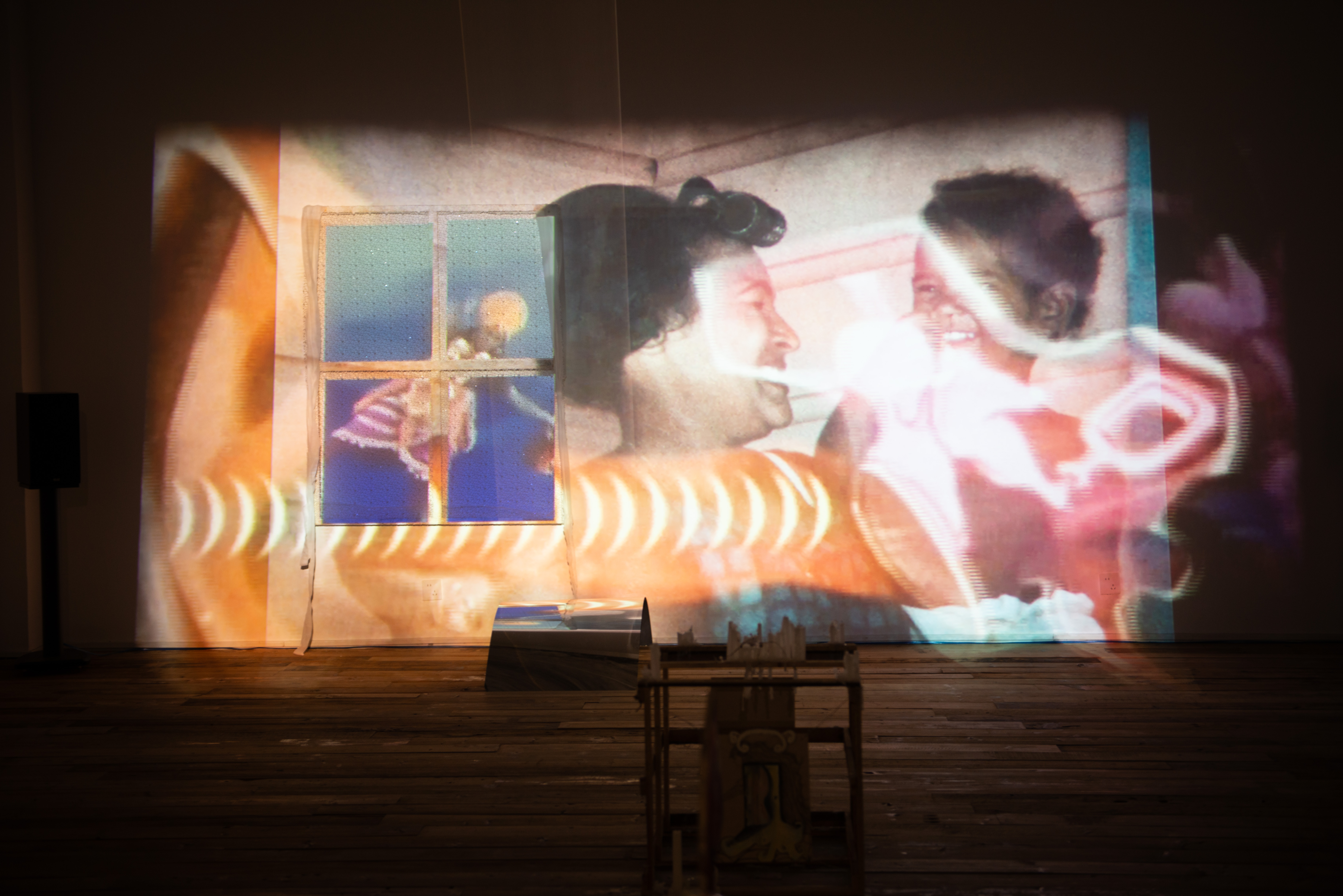

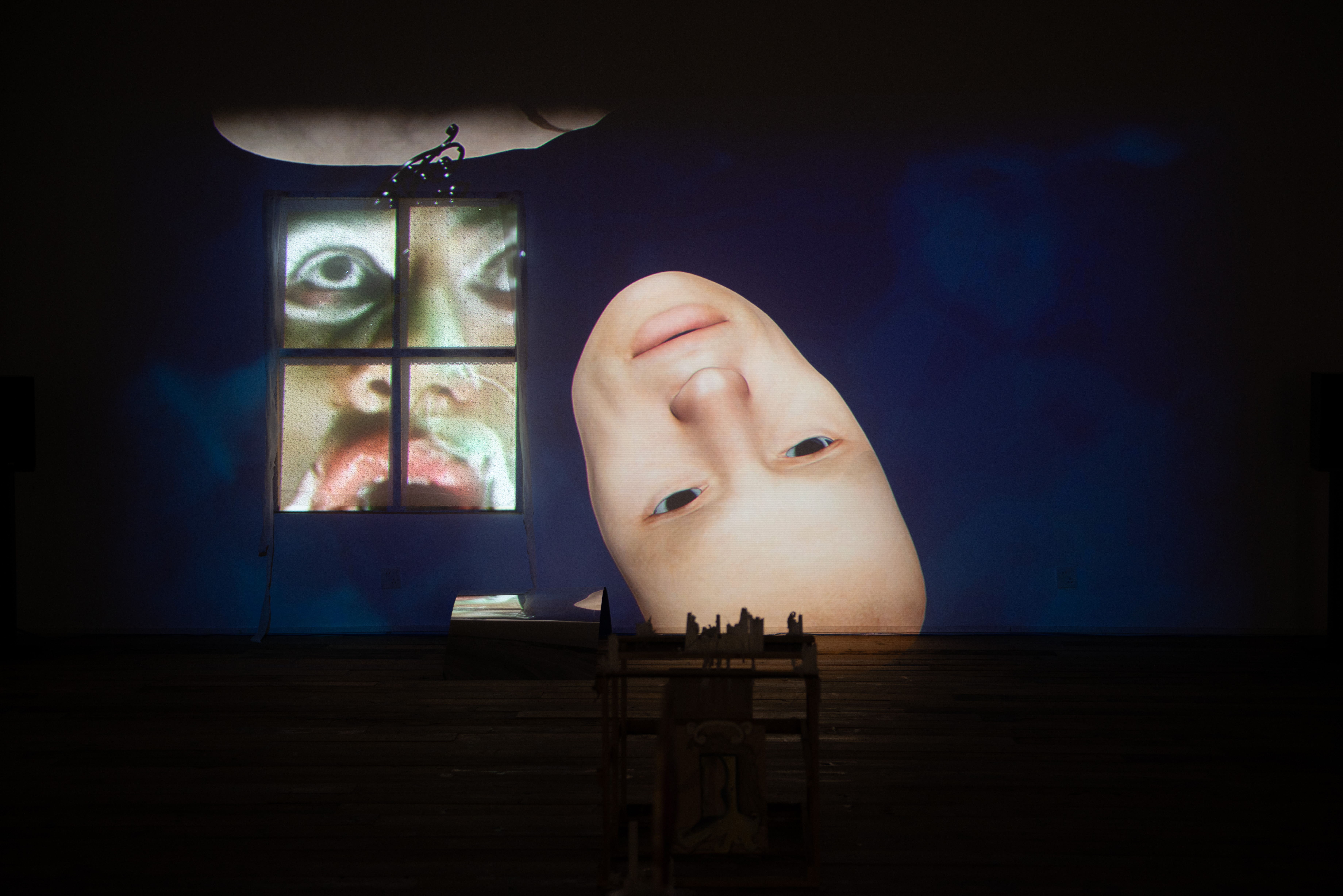
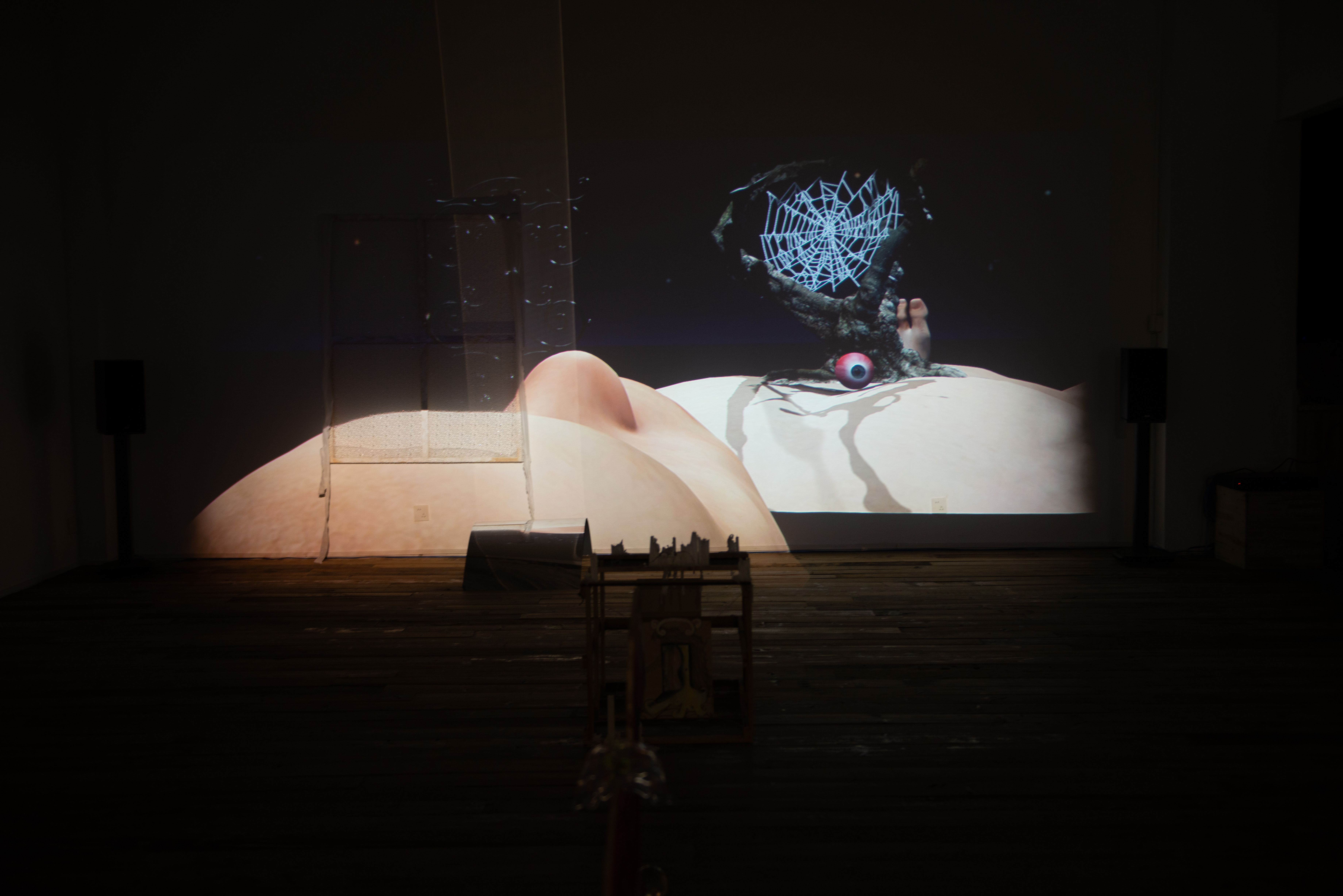
07. Past Lives, 2024
29.7 x 42cm, 3D Visualisation, glossy photographic paper

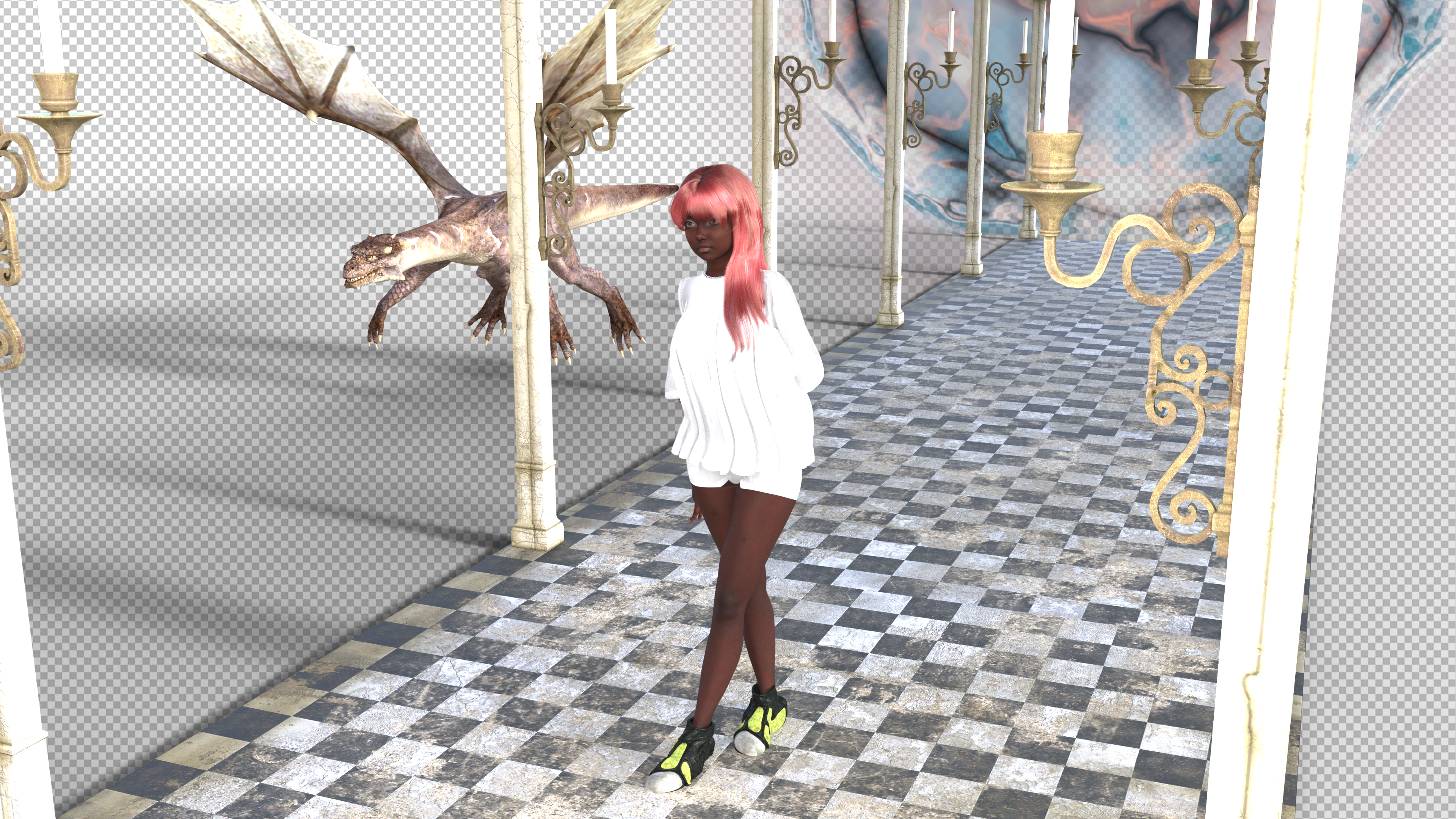


OUTTAKES:
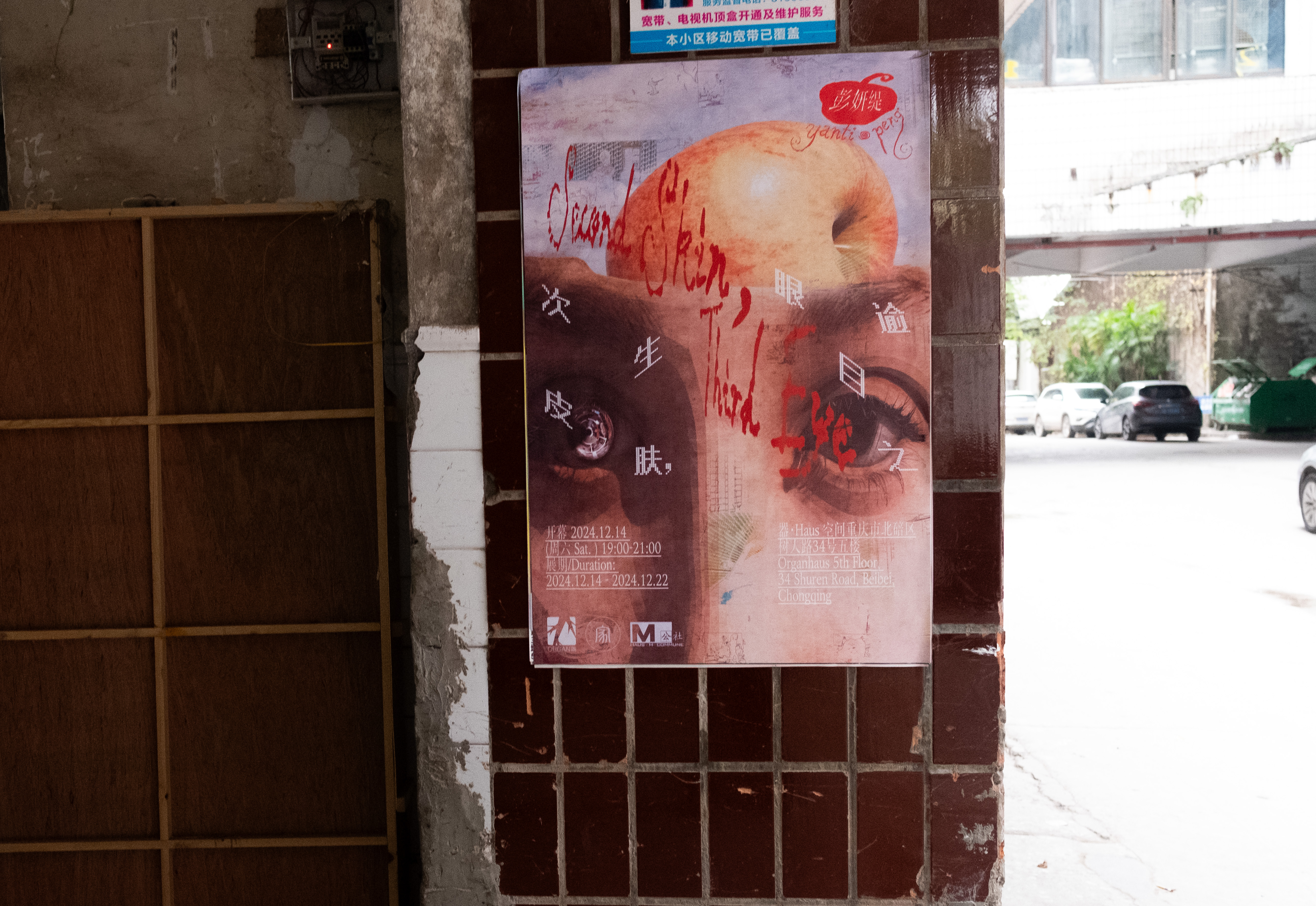

Exhibition Special Thanks:
Duruo Wang 杜若(Titles Translation and Text Proofreading)
JiuJiu 九九 (Artwork Help for Fear of God: Selling Jesus as a Gundam)
Wu Jianping 吴剑平(Artwork Help for Body Autonomy)
Li Honghong 李红宏(Artwork Help for Body Autonomy)
Hu Liwei 胡力维(Artwork Help for Poison Fruit)
Zhu Zhu 珠珠(Artwork Help for Poison Fruit)
Ni Kun 倪昆(Artwork Help for Poison Fruit)
Yuni Dale Zhang 张恩琪(Artwork Help for Poison Fruit)
Yuni Dale Zhang’s mother 张恩琪母亲(Artwork Help for Poison Fruit)
Zhou Yirou 周依柔(Artwork Help for Poison Fruit)
Yang Kaikai 杨开开(Artwork Help for Poison Fruit and Install Help)
Liao Liao 了了(Install Help)
Wang Jian 王建(Installer)
Yang Shu 杨述 (Care)
